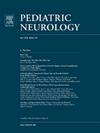胎儿髓圆锥畸形的超声分析:产前诊断和产后预后的综合研究
IF 3.2
3区 医学
Q2 CLINICAL NEUROLOGY
引用次数: 0
摘要
背景探讨胎儿髓圆锥(CM)位置异常的产前特征及远期预后。方法回顾性观察我院2016年11月至2022年6月超声诊断为CM位置异常的所有胎儿。收集和分析临床资料,包括一般信息、产前CM位置变化、相关畸形、遗传信息和妊娠结局。结果共选择210例胎儿,将其分为单纯组(单独CM位置异常)和异常组(合并其他先天性异常)。在异常组中,最常见的先天性异常涉及脊柱、心脏和四肢。单纯组和异常组染色体异常概率分别为4.1%和12.5%,活产率分别为94.6%和22.1%。产前跟踪显示,两组CM升到L3以上的分别为89.2%和19.1%。接受者工作特征曲线分析表明,位于L4以下的CM是预测腰骶异常的诊断截止点。在1 ~ 5年的随访中,除3例出现不良结局外,两组活产患儿生长发育良好,无明显的脊髓栓系综合征症状。结论产前CM位置与腰骶部异常密切相关。CM位于L4以上且无其他先天性异常或除腰骶异常外仅有轻微异常的胎儿,一般预后良好。然而,当CM位于腰4以下时,检查腰骶异常时需要谨慎。本文章由计算机程序翻译,如有差异,请以英文原文为准。
Ultrasound-Based Analysis of Fetal Conus Medullaris Anomalies: A Comprehensive Study on Prenatal Diagnosis and Postnatal Outcomes
Background
To explore prenatal characteristics and the long-term prognosis in fetal conus medullaris (CM) location anomalies.
Methods
This was a retrospective observational study of all fetuses diagnosed with CM location anomalies using ultrasound between November 2016 and June 2022 at our institution. Clinical data, including general information, prenatal CM location changes, associated malformations, genetic information, and pregnancy outcomes, were collected and analyzed.
Results
In total, 210 fetuses were selected and allocated to the simple group (with isolated CM location anomalies) or the anomaly group (with other congenital anomalies). Among the anomaly group, the most frequently involved congenital anomalies were related to the spine, heart, and limbs. The probability of chromosomal abnormalities was 4.1% in the simple group and 12.5% in the abnormal group, and the live birth rates were 94.6% and 22.1%, respectively. Prenatal tracking revealed that CM ascended above L3 in 89.2% and 19.1% in the two groups, respectively. Receiver operating characteristic curve analysis indicated that a CM located below L4 was the diagnostic cutoff for predicting lumbosacral anomalies. During the one- to five-year follow-up, except for three cases with adverse outcomes, all live-born children from both groups had good growth and development with no evident symptoms of tethered cord syndrome.
Conclusions
The prenatal CM location is closely related to lumbosacral anomalies. Fetuses with CM located above L4 and without other congenital anomalies or with only minor anomalies other than lumbosacral anomalies generally have a favorable prognosis. However, caution is warranted when examining lumbosacral anomalies when the CM is located below L4.
求助全文
通过发布文献求助,成功后即可免费获取论文全文。
去求助
来源期刊

Pediatric neurology
医学-临床神经学
CiteScore
4.80
自引率
2.60%
发文量
176
审稿时长
78 days
期刊介绍:
Pediatric Neurology publishes timely peer-reviewed clinical and research articles covering all aspects of the developing nervous system.
Pediatric Neurology features up-to-the-minute publication of the latest advances in the diagnosis, management, and treatment of pediatric neurologic disorders. The journal''s editor, E. Steve Roach, in conjunction with the team of Associate Editors, heads an internationally recognized editorial board, ensuring the most authoritative and extensive coverage of the field. Among the topics covered are: epilepsy, mitochondrial diseases, congenital malformations, chromosomopathies, peripheral neuropathies, perinatal and childhood stroke, cerebral palsy, as well as other diseases affecting the developing nervous system.
 求助内容:
求助内容: 应助结果提醒方式:
应助结果提醒方式:


